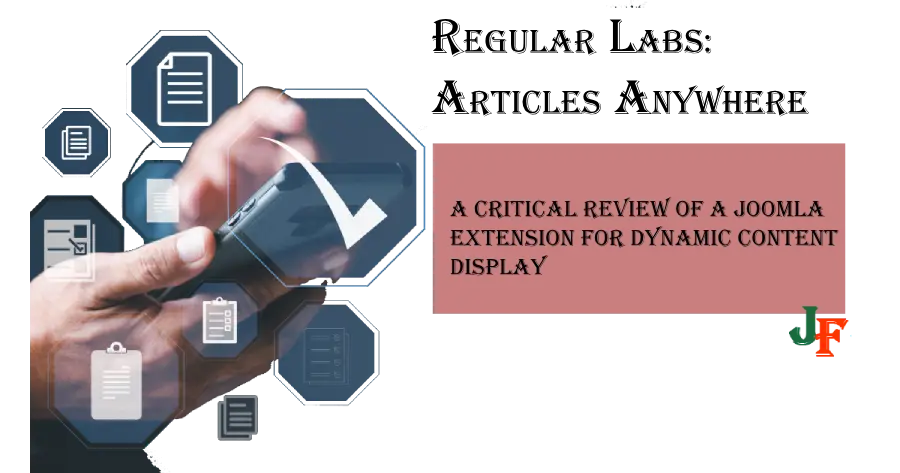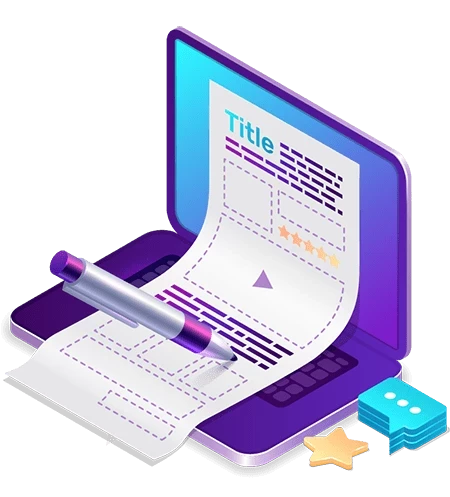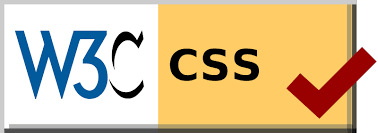Joomla continues to be a leading content management system (CMS), celebrated for its flexibility, scalability, and robust community support.
As we approach 2025, it’s essential for Joomla users to stay informed about the platform’s updates, best practices, and evolving technologies.
This in-depth guide covers the most pressing Joomla questions for the coming year, helping developers, administrators, and website owners navigate the future with confidence.
1. Joomla 4 and 5: Support and Transition
As Joomla 4 approaches the end of its lifecycle, planning for the transition to Joomla 5 has become a priority for many users. Joomla 4, which introduced significant enhancements like better accessibility, improved performance, and a more intuitive admin interface, will no longer receive bug fixes after October 15, 2024, with security fixes ending on October 14, 2025. These dates underscore the urgency of migrating to Joomla 5.
Joomla 5 is designed to carry forward Joomla’s legacy while addressing the needs of modern web development. It offers a streamlined codebase that improves performance and scalability, enhanced accessibility features for meeting global web standards, and extended SEO tools for better visibility in search engines. Developers will appreciate the improved API for custom extension development, while site administrators can benefit from refined workflows and interface updates.
Upgrading from Joomla 4 to Joomla 5 requires careful planning. Begin by backing up your site to ensure that no data is lost during the transition. Use tools like Akeeba Backup to create reliable backups of your files and database. Before initiating the update, check that all extensions, templates, and custom code are compatible with Joomla 5. Most major developers have already released updates for Joomla 5 compatibility, but some older extensions may require replacements. Once you’ve confirmed compatibility, use Joomla’s built-in update system to perform the upgrade. Afterward, thoroughly test your site to ensure everything functions as expected.
2. Joomla’s Position in the CMS Market
While WordPress continues to dominate the CMS landscape, Joomla holds a strong position, particularly for projects requiring advanced customization, multilingual capabilities, or intricate access controls. Unlike WordPress, Joomla offers built-in multilingual support without the need for third-party plugins, making it an excellent choice for businesses and organizations operating in multiple regions or languages.
Most Popular Content Management Systems in 2024
| Rank | CMS | Market Share (%) | Number of Sites (Millions) | Change from 2023 |
|---|---|---|---|---|
| 1 | WordPress | 62.2 | 43.7 | -0.8 |
| 2 | Shopify | 6.6 | 4.6 | +0.7 |
| 3 | Wix | 4.5 | 3.2 | +0.8 |
| 4 | Squarespace | 3.1 | 2.2 | +0.1 |
| 5 | Joomla | 2.3 | 1.6 | -0.3 |
| 6 | Drupal | 1.3 | 0.9 | -0.3 |
| 7 | Adobe Systems | 1.2 | 0.9 | -0.3 |
| 8 | Webflow | 1.1 | 0.8 | +0.1 |
| 9 | PrestaShop | 1.0 | 0.7 | -0.2 |
| 10 | Google Systems | 0.9 | 0.6 | -0.2 |
Data sourced from W3Techs, November 2024.
Joomla’s flexibility also makes it ideal for websites with complex structures, such as government portals, nonprofit organizations, and educational institutions. The platform’s permission and user management system allows for granular control over what users can see and do, which is often a limitation in other CMS platforms. Additionally, Joomla’s template override system enables developers to customize site designs without altering the core code, a feature that appeals to those seeking tailor-made solutions.
Industries Utilizing Joomla
| Industry | Percentage of Joomla Websites (%) |
|---|---|
| Business & Industry | 21.78 |
| Arts & Entertainment | 5.89 |
| Shopping | 4.78 |
| Career & Education | 4.80 |
Data sourced from UK Web Host Review.
As the web development landscape evolves, Joomla remains a reliable choice for those who value stability, security, and a robust feature set. Its vibrant community ensures that users can access support and share knowledge, fostering a collaborative environment for innovation and growth.
3. Enhancing Security
Security is a top concern for website owners, and Joomla provides a strong foundation for safeguarding your site against threats. The platform includes numerous built-in features, such as user authentication options, secure session handling, and database encryption. However, administrators must take additional steps to ensure their sites remain secure, especially in the face of evolving cyber threats.
Sources for CMS Security Breaches
- CMS Notifies Individuals Potentially Impacted by Data Breach
- CMS Responding to Data Breach at Contractor
- Almost a Million More Affected by Medicare Data Breach
- CMS Notifies Additional Individuals Potentially Impacted by MOVEit Data Breach
- Medicare Data Breach Impacts 600,000 Beneficiaries
- CMS Confirms 3.1 Million Individuals Affected by MOVEit Hack
- Was Your Medicare Data Affected by a Data Breach?
- CMS Breach Response Handbook
- Breach Response | CMS Information Security & Privacy Group
- CMS Notifying 612K Medicare Beneficiaries of Data Breach
Regular updates are the cornerstone of Joomla security. Keeping your Joomla installation, extensions, and templates up to date ensures that known vulnerabilities are patched promptly. Enabling two-factor authentication (2FA) adds an additional layer of security to your admin login, significantly reducing the risk of unauthorized access. You can activate 2FA directly from Joomla’s core settings, making it a simple yet effective measure.
Backups are another essential aspect of site security. Use a reliable extension like Akeeba Backup to schedule automated backups. This ensures that, in the event of a breach or server failure, your data can be quickly restored. Additionally, consider conducting regular security audits to identify and address vulnerabilities. Tools like Joomla Admin Tools can help with tasks such as file integrity checks and permissions management, enhancing your overall security posture.
4. Performance Optimization Tips
A fast-loading website is crucial not only for user experience but also for search engine rankings. Joomla provides various tools and features to help you optimize site performance, but achieving the best results requires a combination of platform-specific settings and general web performance best practices.
Start by enabling Joomla’s built-in caching options. Caching reduces server load by storing static versions of your pages, allowing them to load more quickly for repeat visitors. Beyond caching, you can improve performance by optimizing images. Use tools like TinyPNG or online image compressors to reduce file sizes without compromising quality. For Joomla-specific solutions, extensions like JCH Optimize can combine and minify CSS and JavaScript files, further reducing page load times.
Another effective strategy is to implement a Content Delivery Network (CDN). A CDN distributes your website’s assets across a network of global servers, ensuring that users can access your site quickly, regardless of their location. Cloudflare and BunnyCDN are popular options that integrate seamlessly with Joomla. Finally, consider hosting your Joomla site on a server optimized for CMS platforms. Many hosting providers now offer Joomla-specific plans with configurations tailored for maximum performance.
5. Adopting New Technologies
As the web is changing rapidly, Joomla is keeping pace by embracing modern web technologies. Progressive Web Apps (PWAs), for instance, are becoming increasingly popular as they offer the functionality of a mobile app without requiring users to download anything. Joomla supports PWAs through various extensions that enable features like offline access, push notifications, and app-like navigation.
Artificial intelligence (AI) is also making its mark on Joomla. AI-powered tools for analytics, chatbots, and personalization are becoming increasingly common, helping site owners engage users more effectively. Extensions that integrate AI functionalities, such as automated content tagging or personalized recommendations, can give Joomla websites a competitive edge.
6. Community and Support
Joomla’s community is one of its greatest strengths. With thousands of contributors worldwide, the Joomla ecosystem thrives on collaboration and shared knowledge. Participating in Joomla events, such as JoomlaDays or online meetups, provides an excellent opportunity to learn, network, and stay updated on the latest developments.
The Joomla forums and official documentation are invaluable resources for troubleshooting and learning. Whether you’re a beginner or an experienced developer, you’ll find answers to most questions within the community. Additionally, Joomla’s growing presence on platforms like GitHub and Stack Overflow ensures that developers can collaborate on projects and share solutions to common problems.
Contributing to the Joomla project is another way to deepen your involvement. From submitting bug reports to writing documentation or even developing new features, there are many ways to give back to the community while improving your own skills.
7. Customization and Development
Joomla’s flexibility allows developers to create highly customized solutions for various projects. One of the most powerful features is the template override system, which enables developers to customize the design and functionality of their sites without altering the core code. This approach ensures that updates can be applied without breaking customizations.
For developers looking to create extensions, Joomla’s robust API provides the tools needed to build modules, plugins, and components. By following Joomla’s coding standards and using tools like Joomla Console, developers can streamline their workflows and produce high-quality solutions.
Joomla also supports integration with other platforms and tools, making it an excellent choice for businesses that need to connect their websites with external services. Whether you’re building custom e-commerce solutions, integrating CRMs, or developing unique functionalities, Joomla offers the flexibility to bring your vision to life.
8. Mastering Multilingual Capabilities
Joomla is renowned for its built-in multilingual capabilities, making it an excellent choice for websites that need to support multiple languages. Unlike other CMS platforms that require third-party plugins, Joomla’s multilingual features are integrated directly into the core, providing a seamless experience for users.
Setting up a multilingual site involves enabling Joomla’s language plugins, downloading and installing the necessary language packs, and configuring content associations for translations. Joomla’s content association feature ensures that users can easily switch between languages while maintaining consistent navigation and structure.
Managing a multilingual site requires careful organization, especially for large projects. Consider creating separate categories and menus for each language to keep content structured and easily accessible. Joomla’s language filter plugin ensures that users see the correct language version of your site based on their preferences, enhancing the overall user experience.
9. Improving SEO
Search engine optimization (SEO) is a critical factor in driving traffic to your Joomla site. Fortunately, Joomla includes a range of built-in tools and extensions to help you improve your site’s visibility in search engines. From customizable meta tags to search-friendly URLs, Joomla provides the essentials for effective SEO.
Start by enabling SEF (Search Engine Friendly) URLs in the Global Configuration settings. This ensures that your site’s URLs are clean and descriptive, making them more appealing to search engines and users alike. You can also configure metadata, including titles and descriptions, directly in Joomla’s content editor.
For more advanced SEO features, consider using extensions like 4SEF and 4SEO are tools witch provide additional functionality, such as XML sitemap generation, analytics integration, and advanced URL management. Regularly updating your content, optimizing images, and maintaining a mobile-friendly design will further enhance your site’s SEO performance.
10. Planning for the Future of Joomla
As Joomla evolves, staying informed about upcoming changes and trends is essential for maintaining a successful website. Regularly review the Joomla roadmap to understand the platform’s development priorities and prepare for new features and updates. Engaging with the Joomla community through forums, events, and social media can also help you stay ahead of the curve.
Future-proofing your Joomla site involves more than just updates. Regularly audit your site’s functionality, optimize its performance, and ensure compatibility with modern web standards. By leveraging Joomla’s robust capabilities and staying active in its community, you can position your website for long-term success.
Conclusion
Joomla continues to be a versatile and robust content management system that adapts to the changing needs of web development. As we move into 2025, it’s clear that staying informed about Joomla’s updates, features, and best practices is essential for website owners, developers, and administrators. From transitioning to Joomla 5 and enhancing security to embracing new technologies and optimizing performance, Joomla offers the tools and flexibility to build and maintain modern, high-performing websites.
The platform’s strengths in multilingual support, customization, and its vibrant community make it an excellent choice for a wide range of projects.
Whether you’re upgrading, optimizing, or exploring new possibilities, Joomla’s rich feature set and supportive ecosystem make it an ideal partner for achieving your web development goals in 2025 and beyond. Start implementing these insights today and make the most of what Joomla has to offer!
Useful Resources About Joomla
- Joomla Official Website - The official source for Joomla downloads, updates, and news.
- Joomla Documentation - Comprehensive documentation for users, administrators, and developers.
- Joomla Community Forum - A vibrant forum for discussing issues, sharing knowledge, and seeking help.
- Joomla Extensions Directory - A directory of thousands of extensions to enhance your Joomla website.
- Joomla Community Magazine - Articles, tips, and news from the Joomla community.
- Joomla Developer Portal - Resources for developers building on Joomla, including APIs and guides.
- Joomla GitHub Repository - The official GitHub repository for Joomla CMS development.
- JoomShaper - A popular provider of Joomla templates, extensions, and tools.
- RSJoomla - Extensions and solutions for Joomla websites.
- Joomla-Monster - High-quality Joomla templates and tools.

























































